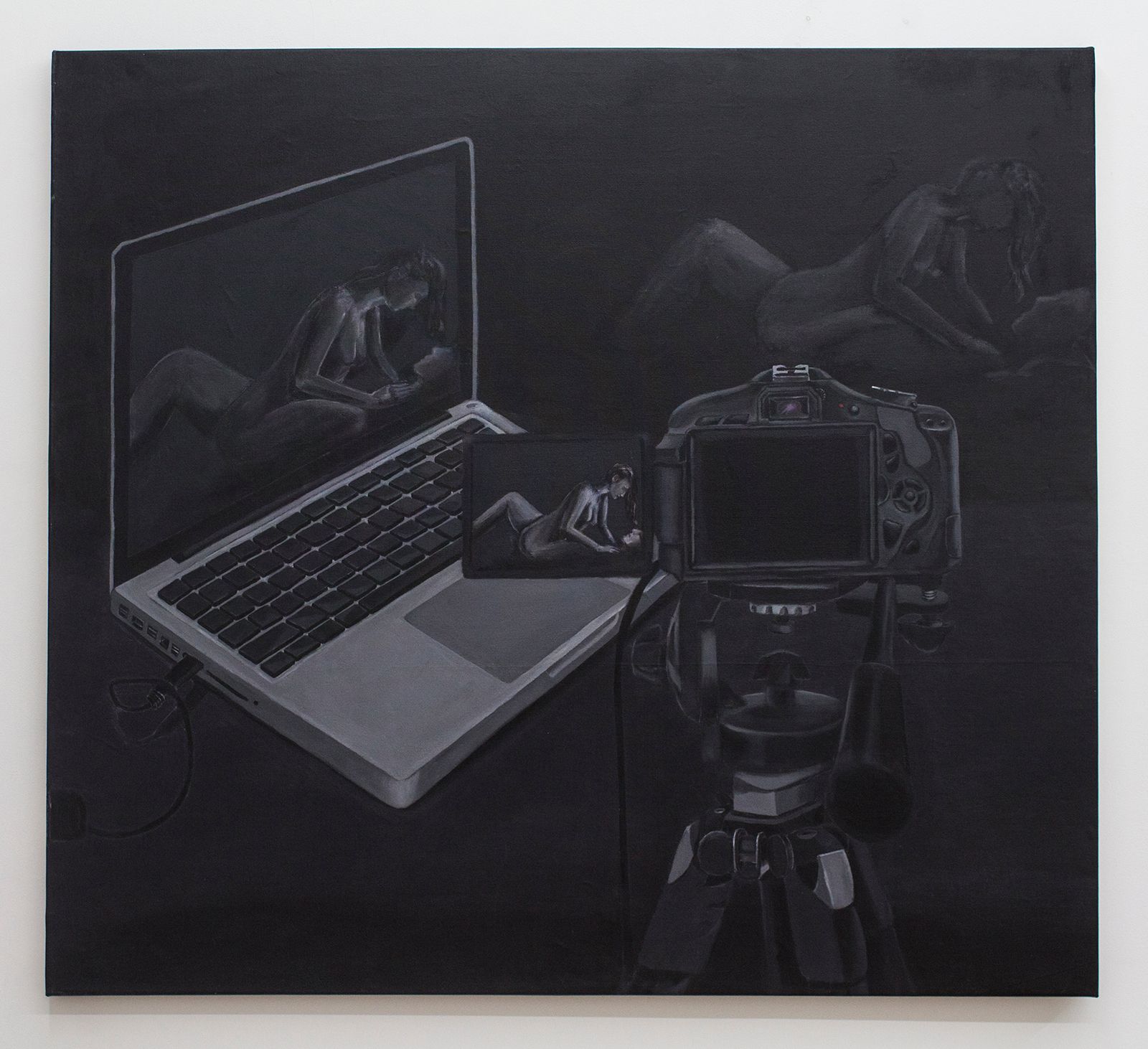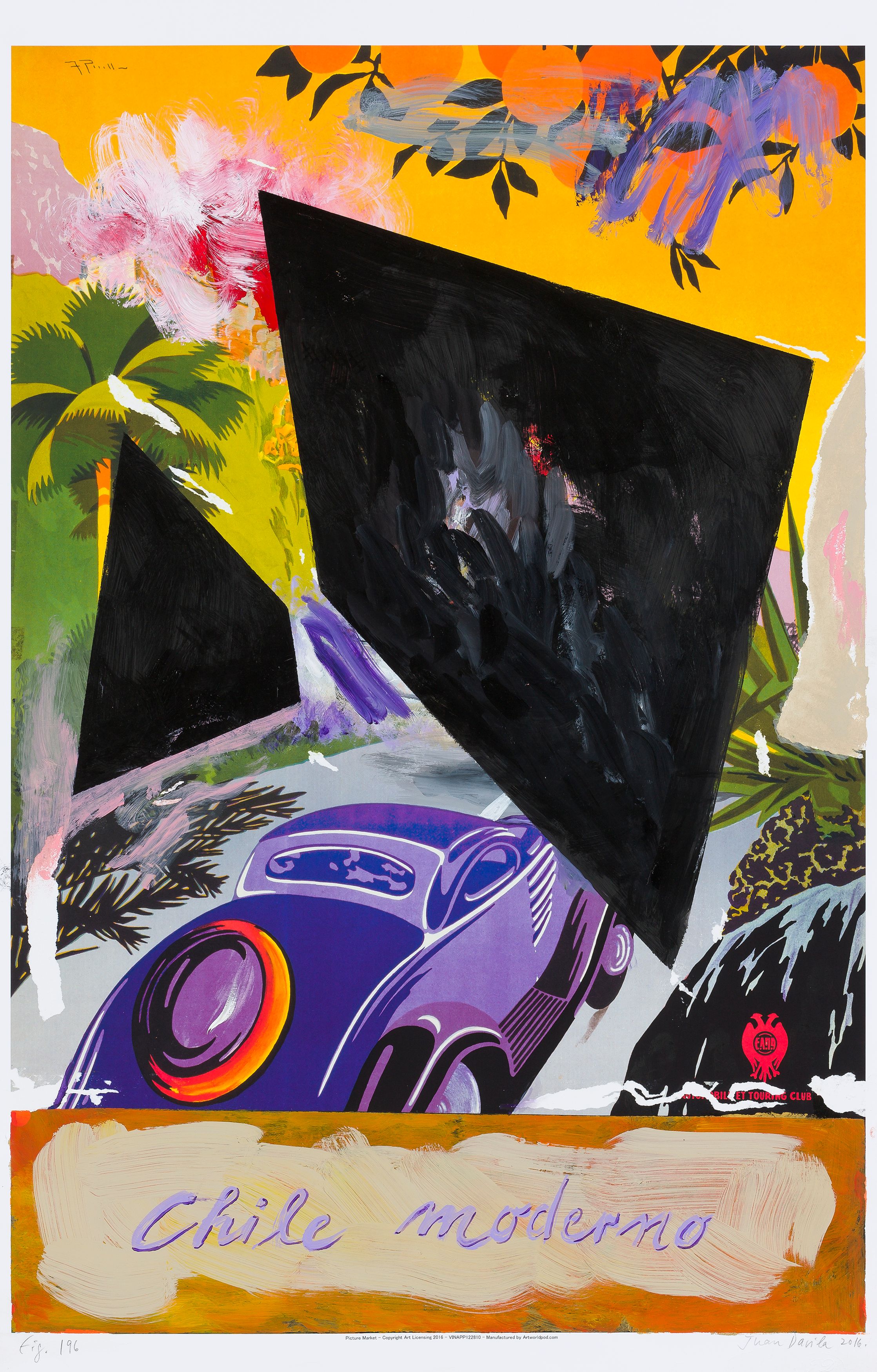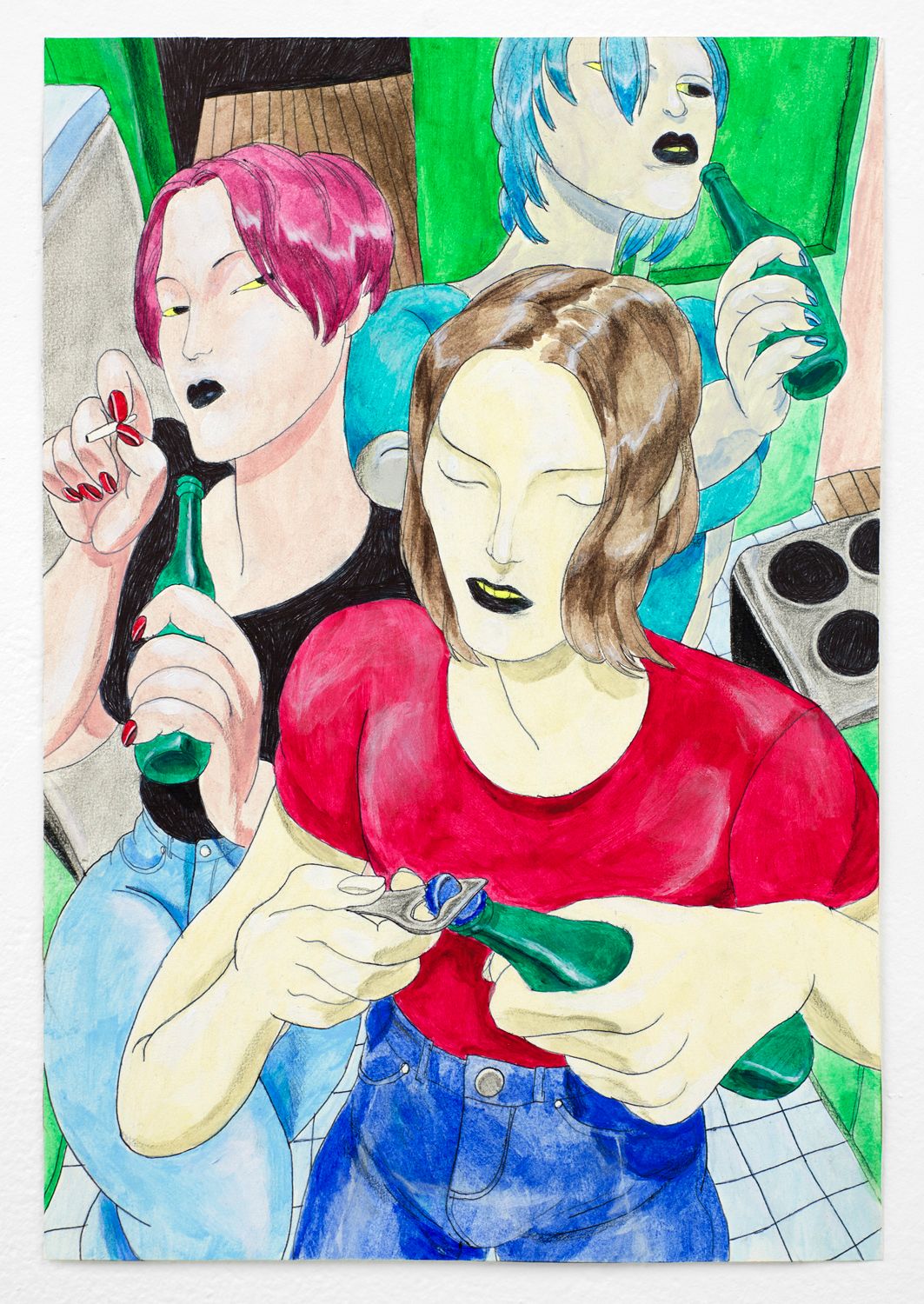Vanessa Gully Santiago
Jess
Helen Johnson
E’wao Kagoshima
JP Munro
David Rappeneau
Christine Wang 15 January 2017 - 24 February 2017
Foxy Production is pleased to present The History Show, an exhibition of painting and drawing that takes the intersection of personal and collective narratives as its starting point. Incorporating history painting, sci-fi, illustration, and Expressionism, the show reveals – with an almost gothic feel - the interplay of different histories within and among the works.
History painting is a genre that aims to record, celebrate, and mythologize social and political movements by freezing a narrative into a crucial scene. While today, these functions have been consigned largely to technological representation, art is still engaged with the use of figurative tableaux as a means of both personal and communal voice.
With an acerbic wit, Juan Davila’s 2016 series of paintings on paper emphasize the cynical attitudes and sexual motivations of political and social elites. He places Chilean and Australian national myths in dialogue with commercial design and painterly language.
Vanessa Gully Santiago’s work speaks of a residual private violence, depicting power dynamics through sexual narratives. Her darkly monochromatic painting Video Sex (2015) has a charged atmosphere that is at once intimate, mysterious, and commonplace.
Jess’ “paste-ups,” collaged images from books and magazines, are wistful and enigmatic. They appear both seamless and surreal in their matching of figures. His Collaged Card (1960s) idiosyncratically fuses an art nouveau maiden with an Egyptian temple figure.
Cultural assumptions are questioned in Helen Johnson’s After Duterrau’s The Conciliation: The Qualification (2013) as it plays with the image of Australian nationhood and colonialism. The artist fractures the title and subject of Benjamin Duterrau’s The Conciliation (1840), a painting, considered a key statement in the foundational Australian narrative, that depicts an idealized meeting between indigenous Tasmanians and their English “Protector.”
E’wao Kagoshima’s epic paintings combine wild imaginings with social observation. Recalling Renaissance vanitas and Symbolist painting, his works’ multi-linear narratives are both visceral and provocative.
JP Munro’s drawings comprise multiple naked subjects in scenes of desire and action. Combining pleasure and turbulence, their abundance of subjects recalls classical painting’s use of repeated figures to illustrate an ideal individual’s physiognomy.
A sense of public and private unease is articulated by the striking figures who occupy David Rappaneau’s claustrophobic rooms. The drawings’ settings, distortions of perspective, dramatic colors, and their subjects’ confronting attitudes reinterpret many of the elements of German Expressionism.
Christine Wang’s paintings on cardboard realize a complex relationship between image and form. Their idealization of pastoral living is undercut by a sense of discomfort that is expressed by the dissolution of their images onto their humble support and the longing evident in the text incorporated.
Juan Davila (Santiago, Chile, 1946) studied law (1965–69) and then fine art at the University of Chile (1970–72). His first solo exhibition was Latinamerican Artistic Coordination at CAL Gallery, Santiago, Chile (1974), and in the same year he migrated to Melbourne, Australia where he lives. His work was the subject of a major retrospective exhibition at the Museum of Contemporary Art in Sydney, NSW (2006) and at the National Gallery of Victoria, Melbourne, VIC (2007). He was featured in Documenta 12 in Kassel, Germany (2007). His most recent solo exhibition is Imagen Residual at Matucana 100, Santiago, Chile (2016).
Vanessa Gully Santiago (Braintree, MA, 1984) is based in New York City. She holds a BFA from The Cooper Union (2006) and an MFA from Rutgers University (2013), where she was the recipient of the Paul Robeson Emerging Young Artist Award. Selected exhibitions include Leopardi, Giacomo. III. Dialogo della Moda e della Morte. [Febbraio 15 – 18, 1824]. L’Operette Morali. 1827; memory is blue in the head? heads are easily taken off. (1) at Peninsula Art Space, Brooklyn, NY (2015); Hypnic Jerk at Smart Objects, Los Angeles, CA; and Private Accounts at American Medium, Brooklyn, NY 9 (solo) (both 2016). Her video The Loneliness Thing was screened at The Chicago Underground Film Festival (2014); and at Situation Room, Los Angeles, CA (2015).
Trained as a chemist, Jess Collins (Long Beach, CA, 1923 – San Francisco, CA, 2004), who went simply by Jess, worked on the production of plutonium for the Manhattan Project and then later renounced science. In 1949 he attended the California School of the Arts (now the San Francisco Art Institute). In 1952, with poet Robert Duncan and painter Harry Jacobus, he opened the King Ubu Gallery in San Francisco, which became an important venue for alternative art. His work has been the subject of numerous solo exhibitions, including at MoMA, New York, in 1974. Jess: To and From the Printed Page, curated by Ingrid Schaffner, toured museums across the USA from 2007-2009.
Helen Johnson (Melbourne, Australia, 1979) received a BFA in Painting from RMIT University, Melbourne (2002), and a PHD in Fine Art from Monash University, Melbourne (2014). She currently lives and works in Melbourne. Selected solo exhibitions include Ex-execs, Minerva, Sydney, NSW; Time Flies, Sutton Projects, Melbourne, VIC (both 2014); Cafe Fatigue, Sutton Gallery, Melbourne, VIC; The body is through, Laurel Gitlen, New York, NY; Slow Learners, Château Shatto, Los Angeles, CA (all 2015); Barron Field, Glasgow International, UK (2016); and Warm Ties, ICA, London, UK (forthcoming 2017).
E’wao Kagoshima (Niigata, Japan, 1945) received his MFA from the Tokyo National University of Fine Arts in Tokyo, Japan (1969), and in 1976 moved to New York. He currently lives and works in Queens, NY. A major figure in Japanese Pop Art, Kagoshima has had solo exhibitions at the Nagai Gallery, Tokyo, Japan (1976); The New Museum, New York, NY (both 1983); and Algus Greenspon, New York, NY (2014). He has been included in exhibitions at the ICA, London, UK (1982); The Asian American Art Center, New York, NY (1987); The Laforet Museum, Tokyo and Osaka, Japan (1985); MoMA PS1, New York, NY (2010); Galerie Rodolphe Janssen, Brussels, Belgium; and Sculpture Center, New York, NY (both 2013).
J.P. Munro (Inglewood, CA, 1975) holds a BFA from UCLA (1997) and an MFA from the Art Center College of Design in Pasadena, CA (2003). He lives and works in Los Angeles. Selected solo exhibitions include JP Munro at Sadie Coles HQ, London, UK (2008); and The Source at China Art Objects Galleries, Los Angeles, CA (2014). Group exhibitions include Whitney Biennial, Whitney Museum of Art, New York, NY; and 100 Artists See God, Curated by John Baldessari and Meg Cranston, ICA, London,UK, which then traveled to museums across the USA (both 2006).
David Rappaneau is a French artist living in France.
Christine Wang (Washington, DC, 1985) studied mural painting at the Central Academy of Fine Arts in Beijing (2006). She received a BFA from Cooper Union, New York (2008), and an MFA from UCLA (2013). She lives and works in Los Angeles. Solo exhibitions include at Reiseburogalerie, Cologne, Germany (2015); Night Gallery, Los Angeles, CA (2016); and Galerie Nagel Draxler, Berlin (forthcoming 2017).
CREDITS
Photography: Mark Woods.


















